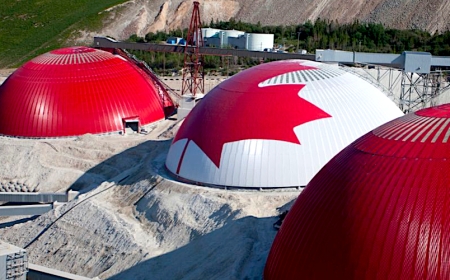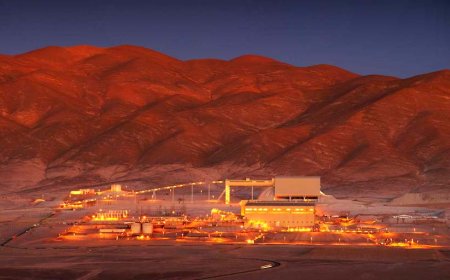Gold, silver to rise as political, economic risks grind
Gold and silver prices have been on a roller coaster over the past two years as prices have responded to the changing political and economic environment.


A key shift came in March 2022, when the United States Federal Reserve pivoted its stance that inflation was not as transitory as it previously thought. Since then, we’ve seen the central banks of advanced economies raising interest rates at the quickest pace in more than 50 years.
Gold and silver prices declined last year from April to September as interest rates began to climb. The metal prices started to rally again that September on expectations that central banks would slow interest rate increases as the economic outlook weakened.
This rally was interrupted by a single economic data point: the release of a much stronger U.S. employment report on Feb. 3, 2023. Then other economic data showed the U.S. economy was more robust than economists’ forecasts — putting a damper on the metals price rally as it appeared that central banks would continue raising rates at a fast pace.
Along with the rise in central bank policy rates, the rising U.S. dollar and long-term yields have also worked against gold and silver prices over the past two years. Gold and silver prices are generally negatively correlated with the U.S. dollar and long-term yields, meaning that gold and silver prices move in the opposite direction of these two factors. With U.S. interest rates at (or close to) cyclical peak, we expect that the U.S. dollar and long-term bond yields will start to ease by mid-2024.
The rapid rise in interest rates has dampened economic growth, which has also weighed on gold and silver prices. The International Monetary Fund’s updated World Economic Outlook projects growth to decline somewhat further from 3.5% in 2022 to 3% this year and 2.9% 2024.
However, a recession taking hold as the rapid interest rate increases continue to dampen growth can’t be ruled out if central banks overshoot and raise rates too much or are too slow in lowering rates as economies cool. Historically, gold and silver prices generally decline as a recession starts, then rise as monetary and fiscal policies ease to offset the recession.

Safe haven demand
Although key fundamental drivers, such as a rising U.S. dollar and rising interest rates, have created resistance for gold and silver prices, they have remained more buoyant than key indicators would have suggested. Part of the reason for this is safe-haven demand for the metals driven by geopolitical and financial crises. Safe haven assets are investment alternatives that investors prefer during times of increased market turbulence, economic, financial or geopolitical risk.
The expectation is that safe-haven assets will not decline as much or will even rise during times of risk. Traditionally, safe haven assets have comprised gold, silver, U.S. Treasuries, cash and the Swiss franc. During financial crises, safe haven assets are chosen as they have little or no counterparty risk.
Safe haven demand for gold and silver tends to create a bump in the price. As the event unfolds, the price increases as investors seek the assets. Then, as perception grows of a resolution or of reduced market risk, investor sentiment quickly reverts from safe haven buying to risk-seeking assets.
Historically, geopolitical turmoil has, on average, increased the gold price about 10% and the silver price about 14%. Russia’s February 2022 invasion of Ukraine and the recent Hamas attack on Israel are two geopolitical events that have elevated gold and silver prices over the last two years. Gold and silver prices also rose sharply after the collapse of Silicon Valley Bank in the U.S. created uncertainty around the financial system’s stability and how many other banks were insolvent.
2024 forecast
Our baseline forecast is that gold and silver prices are likely to continue to trend sideways into 2024 as central banks continue the wait-and-see approach at the next several meetings to monitor inflation versus slowing economic growth.
But by mid-2024, we think central banks will start to ease interest rates to combat slowing growth, despite inflation remaining above their 2% targets. In addition, there are many geopolitical crises on the horizon and gold and silver prices are likely to continue to benefit from spurts of safe-haven demand. In other words, bullish factors will start to dominate again.
We present forecast scenarios with the baseline highest probability outcome. Our baseline forecast shows gold prices rising to a quarter average of US$2,100 per oz. and silver prices to US$26 per oz. in the last quarter of 2024. (Spot prices in mid-November were US$1,985 per oz. of gold and US$23.85 per oz. of silver.)
Gold and silver prices will likely move even higher as two key factors become prominent in our outlook: the decline in the U.S. dollar and governments’ attempt to address massive global debt levels.
The U.S. dollar is chronically overvalued – the global trade imbalances attest to this. If the U.S. economy does fall into a recession next year, the high value of the dollar is sure to become a prime topic of debate during the 2024 presidential election.
The last time the U.S. dollar rose this sharply during a Fed tightening cycle was in 1984, which resulted in the Plaza Accord — an international agreement to devalue the U.S. dollar. Today’s political environment would make an international agreement challenging as it would be difficult to get European Union countries to agree to a higher euro. Getting China, and the Association of Southeast Asian Nations countries on board seems much less plausible. This suggests the most likely outcome is a continuation and expansion of Trump-era tariffs and currency wars.
Governments had already amassed massive debt levels prior to the COVID-19 outbreak. But because of the fiscal largesse during the pandemic, government debt-to-gross-domestic-product (GDP) levels have risen even further. Debt levels in excess of 90% tend to impair economic growth, which then starts to limit policy options. High debt levels also make it more likely that small changes in interest rates could trigger a recession and make it increasingly difficult for governments to service their debts. U.S. debt servicing costs will exceed US$1 trillion per year in coming years, for example.
One choice governments have to reduce their debt-to-GDP levels is by boosting nominal growth through inflation and expansive monetary/fiscal policies. Since this method to reduce debt to GDP is much more popular with voters than alternatives such as higher taxes, cuts to entitlements, depression, default, etc., we are very bullish on gold and silver prices in the long-term.
In our view, over the next few years gold will take out its inflation-adjusted high of US$3,300 per oz. (this is the January 1980 gold price high adjusted into today’s dollars). And silver will rise above its previous high of US$49 per ounce.




















